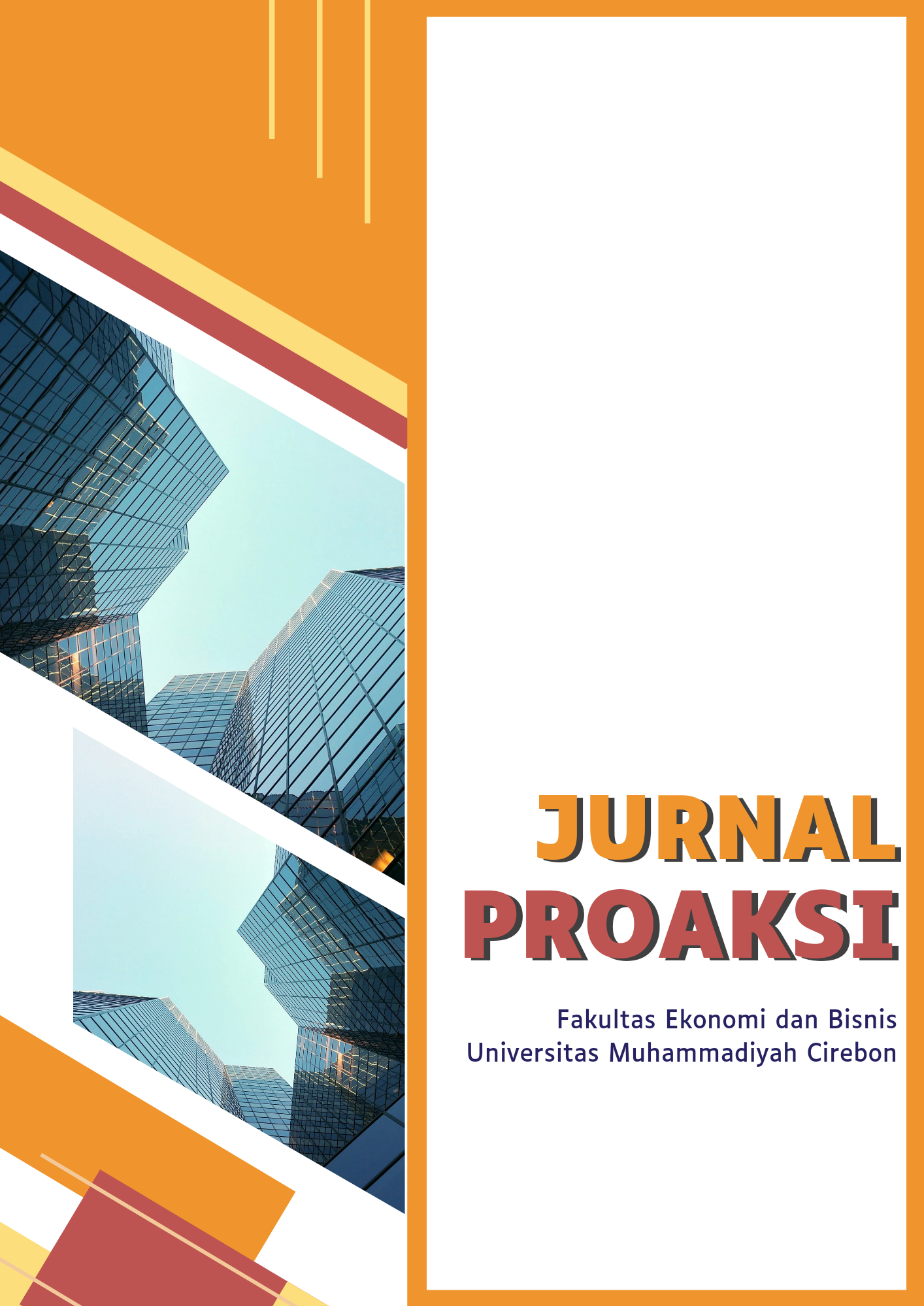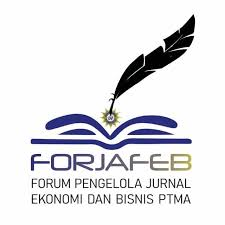The Detecting Financial Statement Fraud With a New Fraud Diamond Model
DOI:
https://doi.org/10.32534/jpk.v11i4.6583Keywords:
Financial Statement Fraud, New Fraud Diamond Model, Earnings Management, Energy, Fraud DetectionAbstract
The severe impact of financial statement fraud (FSF), particularly in large corporations, remains a significant challenge globally, often arising due to weak internal controls and the pressure on employees to meet financial targets. This study explores the applicability of the New Fraud Diamond Model on financial statement fraud (FSF) in energy companies listed on the Indonesian Stock Exchange (IDX) from 2019 until 2023. The sample comprises 238 companies selected through purposive sampling. The research results indicate that financial stability and financial targets positively influence FSF, while effective monitoring has a negative effect. Other variables show no significant impact. The findings provide practical implications for regulators and companies to strengthen governance mechanisms, enhance monitoring effectiveness, and align financial targets with long-term goals to mitigate fraud risks, thereby improving overall corporate accountability and financial market stability.
Downloads
References
ACFE. (2024). Occupational Fraud 2024: A Report To The Nations. Retrieved from https://legacy.acfe.com/report-to-the-nations/2024/
AICPA. (2002). Consideration of Fraud in a Financial Statement Audit. Retrieved from https://us.aicpa.org/content/dam/aicpa/research/standards/auditattest/downloadabledocuments/au-00316.pdf
Anisykurlillah, I., Ardiansah, M. N., & Nurrahmasari, A. (2023). Fraudulent Financial Statements Detection Using Fraud Triangle Analysis: Institutional Ownership as A Moderating Variable. Accounting Analysis Journal, 11(2), 138–148. https://doi.org/10.15294/aaj.v11i2.57517
Biduri, S., & Tjahjadi, B. (2024). Determinants of financial statement fraud: the perspective of pentagon fraud theory (evidence on Islamic banking companies in Indonesia). Journal of Islamic Accounting and Business Research. https://doi.org/10.1108/JIABR-08-2022-0213
Cressey, D. (1953). The Fraud Triangle Theory. Journal of Emerging Trends in Economics and Management Sciences.
Dechow, P. M., Ge, W., Larson, C. R., & Sloan, R. G. (2011). Predicting Material Accounting Misstatements*. Contemporary Accounting Research, 28(1), 17–82. https://doi.org/10.1111/j.1911-3846.2010.01041.x
Demetriades, P., & Owusu-Agyei, S. (2022). Fraudulent financial reporting: an application of fraud diamond to Toshiba’s accounting scandal. Journal of Financial Crime, 29(2), 729–763. https://doi.org/10.1108/JFC-05-2021-0108
Fathmaningrum, E. S., & Anggarani, G. (2021). Fraud Pentagon and Fraudulent Financial Reporting: Evidence from Manufacturing Companies in Indonesia and Malaysia. Journal of Accounting and Investment, 22(3), 625–646. https://doi.org/10.18196/jai.v22i3.12538
Gbegi, D., & Adebisi, J. (2013). THE NEW FRAUD DIAMOND MODEL-HOW CAN IT HELP FORENSIC ACCOUNTANTS IN FRAUD INVESTIGATION IN NIGERIA? European Journal of Accounting Auditing and Fiancé Research, 1(4), 129–138. Retrieved from. https://scholar.google.com/scholar?cluster=6681731613947883721&hl=en&oi=scholarr
Ghozali, I., & Ratmono, D. (2018). Analisis Multivariat dan Ekonometrika Teori, Konsep dan Aplikasi dengan EViews 10. Universitas Diponegoro. Retrieved from https://scholar.google.com/citations?view_op=view_citation&hl=en&user=kbmkIQQAAAAJ&citation_for_view=kbmkIQQAAAAJ:PZE8UkGerEcC
Indonesian Corruption Watch. (2024, April 1). Kasus Korupsi PT Timah: Potret Buruk Tata Kelola Sektor Ekstraktif. Retrieved from https://antikorupsi.org/id/kasus-korupsi-pt-timah-potret-buruk-tata-kelola-sektor-ekstraktif
Jensen, M. C., & Meckling, W. H. (1976). Theory of the firm: Managerial behavior, agency costs and ownership structure. Journal of Financial Economics, 3(4), 305–360. https://doi.org/https://doi.org/10.1016/0304-405X(76)90026-X
Jones, J. J. (1991). Earnings Management During Import Relief Investigations. Journal of Accounting Research, 29(2), 193-228. https://doi.org/10.2307/2491047
Khamainy, A. H., Ali, M., & Setiawan, M. A. (2022). Detecting financial statement fraud through new fraud diamond model: the case of Indonesia. Journal of Financial Crime, 29(3), 925–941. https://doi.org/10.1108/JFC-06-2021-0118
Mandal, A., & S., A. (2023). Evaluating the perceived usefulness and fairness of forensic accounting and investigation standards. Journal of Financial Regulation and Compliance, 31(5), 754–769. https://doi.org/10.1108/JFRC-12-2022-0157
Md Nasir, N. A. binti, Ali, M. J., Razzaque, R. M. R., & Ahmed, K. (2018). Real earnings management and financial statement fraud: evidence from Malaysia. International Journal of Accounting & Information Management, 26(4), 508–526. https://doi.org/10.1108/IJAIM-03-2017-0039
Muhandisah, Z., & Anisykurlillah, I. (2016). Predictive analysis of financial statement fraud with fraud triangle perspective. Accounting Analysis Journal, 5(4), 381–388. https://doi.org/10.15294/AAJ.V5I4.14578
Nasir, N. A. B. M., Ali, M. J., & Ahmed, K. (2019). Corporate governance, board ethnicity and financial statement fraud: evidence from Malaysia. Accounting Research Journal, 32(3), 514–531. https://doi.org/10.1108/ARJ-02-2018-0024
Nur Triyanto, D., Aulia Nur Fajri, M., & Wahyuni, D. (2023). How is financial reporting fraud with the fraud hexagon approach before and during Covid-19 pandemic? Journal of Contemporary Accounting, 5(2), 97–114. https://doi.org/10.20885/jca.vol5.iss2.art4
Omukaga, K. O. (2020). Is the fraud diamond perspective valid in Kenya? Journal of Financial Crime, 28(3), 810–840. https://doi.org/10.1108/JFC-11-2019-0141
Ramírez-Orellana, A., Martínez-Romero, M. J., & Mariño-Garrido, T. (2017). Measuring fraud and earnings management by a case of study: Evidence from an international family business. European Journal of Family Business, 7(1–2), 41–53. https://doi.org/10.1016/j.ejfb.2017.10.001
Ratmono, D., Darsono, D., & Cahyonowati, N. (2020). Financial Statement Fraud Detection With Beneish M-Score and Dechow F-Score Model: An Empirical Analysis of Fraud Pentagon Theory in Indonesia. International Journal of Financial Research, 11(6), 154. https://doi.org/10.5430/ijfr.v11n6p154
Santoso, N. T., & Surenggono. (2018). Predicting Financial Statement Fraud with Fraud Diamond Model of Manufacturing Companies Listed in Indonesia. In State-of-the-Art Theories and Empirical Evidence, 151–163. Springer Singapore. https://doi.org/10.1007/978-981-10-6926-0_9
Sari, M. P., Mahardika, E., Suryandari, D., & Raharja, S. (2022). The audit committee as moderating the effect of hexagon’s fraud on fraudulent financial statements in mining companies listed on the Indonesia stock exchange. Cogent Business and Management, 9(1). https://doi.org/10.1080/23311975.2022.2150118
Sitoresmi, D., Fakhruddin, I., Fitriati, A., & Setyadi, E. J. (2024). Pengaruh Fraud Pentagon Theory Dalam Mendeteksi Fraudulent Financial Reporting Dengan F-Score Model. Owner, 8(4), 4341–4352. https://doi.org/10.33395/owner.v8i4.2294
Skousen, C. J., Smith, K. R., & Wright, C. J. (2009). Detecting and predicting financial statement fraud: The effectiveness of the fraud triangle and SAS No. 99. In Corporate governance and firm performance (pp. 53–81). Emerald Group Publishing Limited. 53-81. http://dx.doi.org/10.1108/S1569-3732(2009)0000013005
Syahria, R. (2019). DETECTING FINANCIAL STATEMENT FRAUD USING FRAUD DIAMOND (A Study on Banking Companies Listed On the Indonesia Stock Exchange Period 2012-2016). Asia Pacific Fraud Journal, 4(2), 183–190. https://doi.org/10.21532/apfjournal.v4i2.114
Wahyudin, A. (2015). Metode Penelitian Bisnis & Pendidikan. In Metode Penelitian BisnIS & Pendidikan. https://scholar.google.com/scholar?cluster=5113928409983349853&hl=en&oi=scholarr
Wolfe, D. T., & Hermanson, D. R. (2004). The Fraud Diamond: Considering the Four Elements of Fraud. https://www.cpajournal.com/2024/06/10/the-fraud-diamond/#google_vignette
Downloads
Published
Issue
Section
License
Copyright (c) 2024 Panji M Ghiffari, Fuad Fuad

This work is licensed under a Creative Commons Attribution 4.0 International License.




















